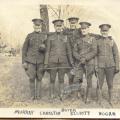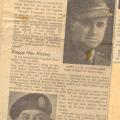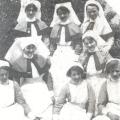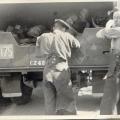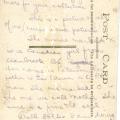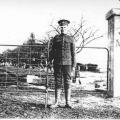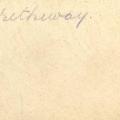Feature Letter of December 18th, 2025
Adkins, George Leslie
My Dear Louise
We are moving from here right away so I am finishing up my last green envelope. You see these green envelopes are given out to us very gingerly so we naturally prize them. They are the only ones that are not censored by our own officers. but they may be censored at the Base. Oh say wasn't that an awful blot on the last one I sent to you. I was addressing the envelope with a fountain pen I borrowed from another fellow. It must have looked awful when you got it & I was ashamed of it, but had no alternative owing to the shortage of these same envelopes.
Why Support Canadian Letters & Images Project
As we move away in time from past conflicts and as our veteran population declines, it becomes increasingly difficult for Canadians to understand the sacrifices that men and women made, both on the battlefield and on the home front, during wartime. The Canadian Letters and Images Project has been sharing their stories, and Canada’s story, for the past quarter century.
These are the experiences of Canadians as seen through their eyes and their words. This is history in the raw, without a lens of interpretation added through time. I invite you to spend some time reading their letters, seeing their faces in the photographs, or listening to an audio letter, to appreciate why their experiences must be preserved for now and for future generations.
Donations, large and small, ensures that The Canadian Letters and Images Project can keep this important content freely available for this generation and for future generations. Please help us to preserve their stories.
Donate
